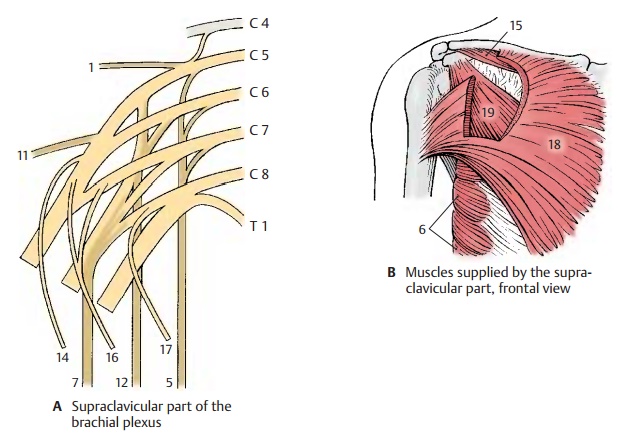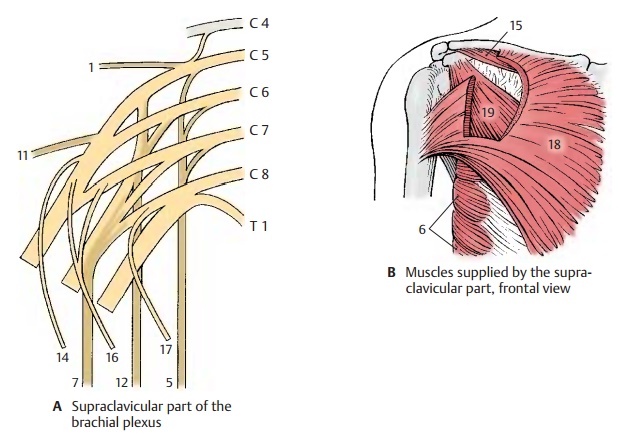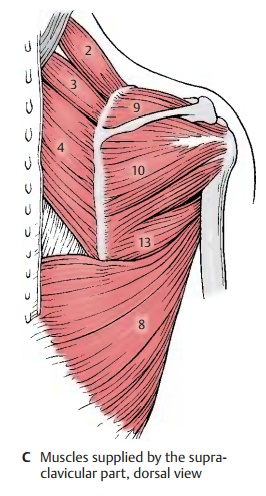Chapter: Human Nervous System and Sensory Organs : Spinal Cord and Spinal Nerves
Supraclavicular Part - Peripheral Nerves

Supraclavicular Part
The
supraclavicular part gives rise to motor nerves that innervate the muscles of theshoulder girdle.
The
following nerves run to the posteriorand
lateral surfaces of the thorax: thedorsalscapular
nerve (A1) (C5) to the
scapularmuscle (C2) and to the
lesser (C3) and greater (C4) rhomboid muscles; the longthoracic nerve (A5) (C5 – C7), the branches ofwhich
terminate at the lateral thoracic wall in the peaks of the anterior serratus
muscle (B6); and the thoracodorsal nerve (A7) (C7, C8), which supplies the
latissimus dorsi muscle (C8). The
muscles of the shoulder blade are innervated at the posterior surface of the
shoulder blade (supraspinous muscle [C9]
and infraspinous muscle [C10]) by
the suprascapular nerve (A11) (C5, C6), and at theanterior
surface by the subscapular nerve (A12) (C5 – C7), which extend to the
sub-scapular muscle and the greater teres muscle (C13).

The
following nerves reach the anterior
sur-face of the thorax: thesubclavius
nerve(A14)(C4 – C6) (to the
subclavius muscle [B15), the lateral pectoral nerve (A16) (C5 – C7) and the medial pectoral nerve (A17) (C7 – T1), which supply the
greater (B18) and lesser (B19) pectoral muscles.

Clinical Note: Injury
to the supraclavicularpart leads to paralysis of the muscles of the shoulder
girdle and makes it impossible to raise the arm. This type of upper brachial plexus paraly-sis (Erb’s palsy) may be caused by
dislocation ofthe shoulder joint during birth, or through im-proper positioning
of the arm during anesthesia. Injury to the infraclavicular part of the
brachial plexus results in lower brachial
plexus paralysis(Klumpke ’s palsy),
which predominantly involves the small muscles of the hand and possibly also
the flexor muscles of the forearm.
Related Topics